Museums of Lecce
Lecce, the capital of the province of the same name, is one of the most fascinating cities in Puglia, known for its extraordinary baroque beauty. In addition to the architectural wonders that adorn its squares and streets, Lecce hosts a vast array of museums that tell the story of the city and the region. Lecce’s museums are treasure troves of art, archaeology, traditions and local culture, and are ideal places for those who want to learn more about this corner of Puglia.
In this article, we discover together the most significant museums in Lecce, unmissable stops for history buffs. Our advice is to visit at least one during your visit to the city.
1. “Sigismondo Castromediano” Museum
The “Sigismondo Castromediano” Provincial Archaeological Museum is one of the main cultural landmarks in Lecce. Located in a historic building that once housed the monastery of Santa Teresa, the museum takes its name from Sigismondo Castromediano, an aristocrat and passionate collector from Lecce. Inside, visitors can admire a vast collection of archaeological finds that tell the ancient history of the area, from prehistory to the Roman period.
Among the most significant pieces of the museum are the Roman statues and inscriptions, vases and everyday objects that testify to life in ancient Messapia, the civilization that inhabited Puglia before the arrival of the Romans. Particular attention is also paid to the collection of ancient coins and the tools used for working ceramics and metal.
2. Faggiano Museum


Another interesting stop for history buffs is the Faggiano Museum, which is located in an ancient historic residence in the center of Lecce. This museum is unique in that it was created in a building that, during renovation work, revealed an important underground archaeological area.
The museum is organized in such a way as to make visitors experience the emotion of a real archaeological “discovery”. Each room tells a part of the site’s history, with finds ranging from ancient floors to everyday furnishings, from human remains to liturgical instruments. The Faggiano Museum is a perfect example of how history and art can be discovered almost by chance, thanks to a series of lucky coincidences.
3. Cartapesta Museum


Lecce is also famous for its artisan tradition linked to the processing of papier-mâché, a technique that has centuries-old roots in the city. The Cartapesta Museum is located inside the Carlo V Castle in Lecce and offers visitors a complete immersion in the art that has made Lecce famous throughout the world. Papier-mâché is used to create works of art, statues and decorations for traditional religious processions, but also for the creation of sculptures and masks.
The museum displays numerous works created by master craftsmen from Lecce, which show the evolution of the technique and its importance for the local culture. The exhibition itinerary unfolds between history and contemporaneity, with sections dedicated to the stages of production, from the first ideas and sketches to the finished product. Every year, the museum also hosts workshops and events dedicated to this extraordinary art, which continues to be passed down from generation to generation.
4. Jewish Museum of Lecce

©FlavioMassari

The Jewish Museum of Lecce is located in the heart of the city’s historic center and represents a testimony to the Jewish presence in southern Italy. The museum, which is located inside an ancient palace, tells the story of the Jewish community of Salento, which dates back to the Middle Ages. Through a series of historical artifacts, documents and liturgical objects, the museum offers an overview of the daily life, culture and traditions of the Jews who lived in Lecce and the surrounding areas. The exhibition also includes information on the medieval synagogue of Lecce, the anti-Semitic laws and the diaspora.
5. Puglia Railway Museum


For train lovers, the Puglia Railway Museum, located near the Lecce train station, is a must-see! The museum houses a vast collection of railway-related artifacts, including steam locomotives, carriages, tools, and historical documents that trace the development of railways in Puglia, from the 19th century to the present day.
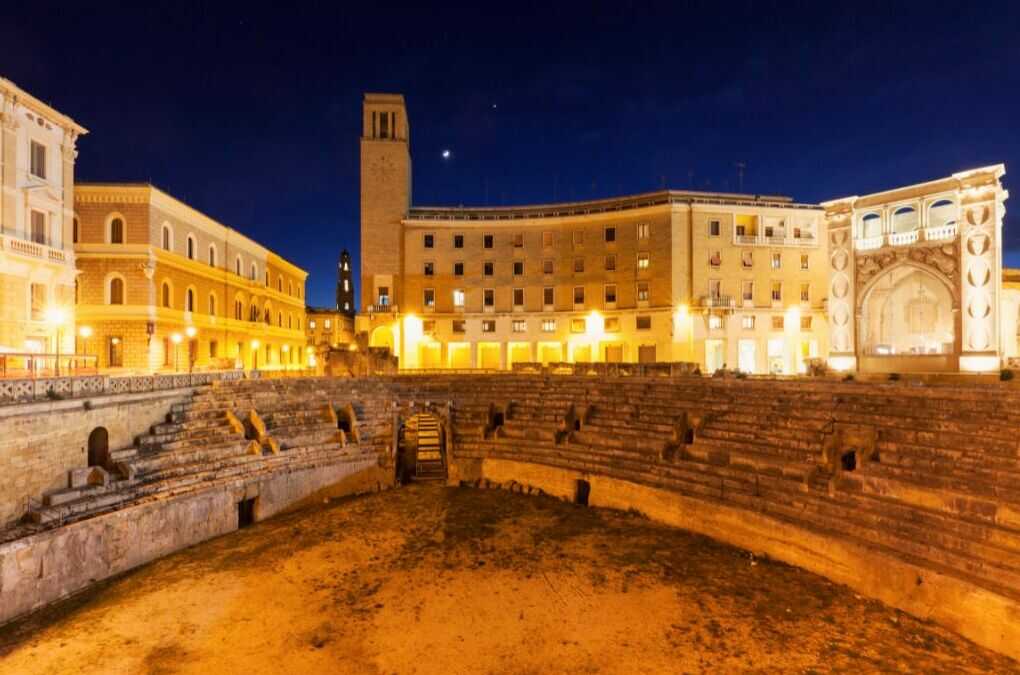
Roman Amphitheatre of Lecce
In the heart of the baroque city of Lecce, one of the most fascinating and significant monuments, which tells thousands of years of history, is the Roman Amphitheater. This extraordinary building, testimony to the glorious past of the ancient city of Lupiae, is one of the main tourist attractions of Lecce and an unmissable stop […]
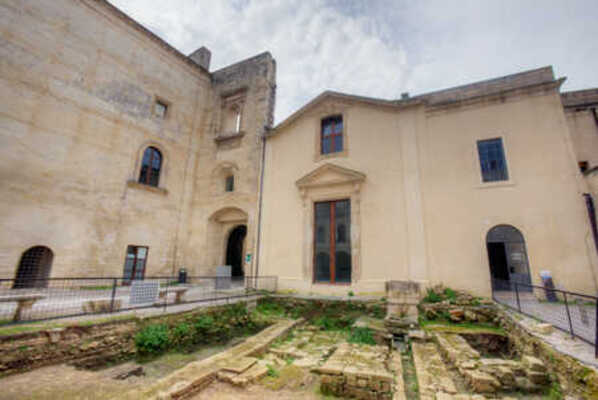
Carlo V Castle in Lecce
Among the many wonders that the city of Lecce hosts, we cannot forget the Carlo V Castle, which stands a short distance from the famous Piazza Sant'Oronzo, a must-visit place for anyone who finds themselves in the splendid baroque city.
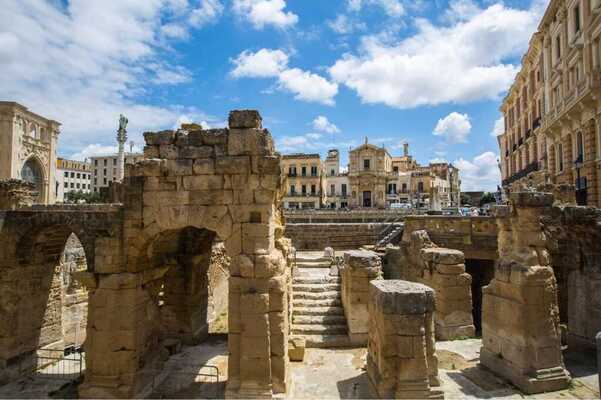
Lecce: the “Florence of the South”
An irresistible combination of history and magic, palaces and churches, monasteries and convents will welcome you in Lecce also known as "Florence of the South" due to its baroque style.

What to see in the surroundings of Lecce
If you are visiting Lecce, one of the most fascinating cities in Salento, do not miss the opportunity to explore its surroundings. Porto Cesareo, Torre Lapillo, Galatina, Gallipoli and Torre dell’Orso are some of the unmissable destinations that will allow you to discover other wonders of this region, famous for its natural beauty, history and […]
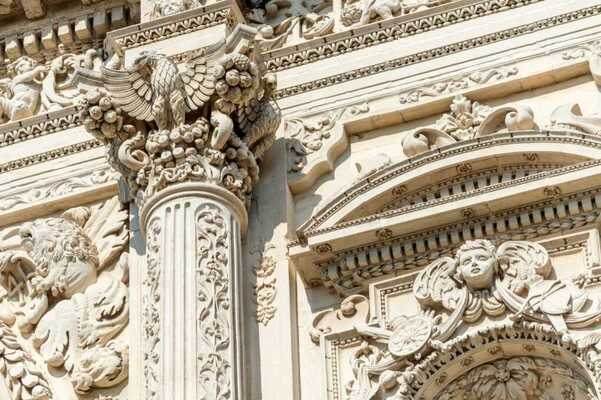
The Lecce baroque
Lecce known as the "Florence of the South" is an open-air museum that enchants its visitors with the exuberance of its typical features of the Lecce Baroque, visible in its architecture in the historic center.
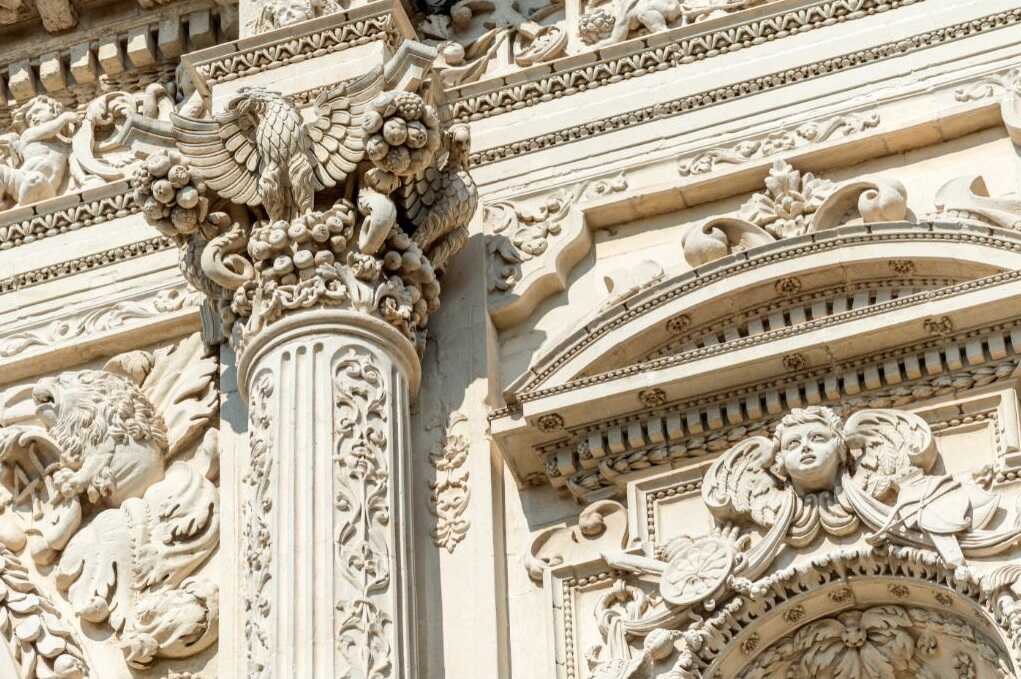
One-Day itinerary in Lecce
What to do in Lecce in one day? Among churches, abbeys, amphitheatres, squares and museums... it is possible to follow an itinerary that will give you a 360-degree experience of this wonderful Apulian city.


